FRUIT > TOMATOES
Chris is a gardening writer and nature enthusiast. He graduated from Oxford Brookes University in 2022 with an MA in Psychology. Chris works with the Leeds Green Action Society, helping their food cooperative by growing various fruit and vegetables on their two allotments in Hyde Park, Leeds.
Reviewed By DAN ORI

Dan has over 27 years’ under his belt caring for plants and gardens. Working as a Horticultural Instructor and Consultant, he draws on a diverse range of experience that includes working as a Head Gardener, Tree Surgeon, Garden Centre Trouble Shooter, and writer of academic papers. Dan has a Level 3 Diploma in Horticulture and is currently a candidate for the RHS’s most prestigious award – The Master of Horticulture.
Contributions From EMILY CUPIT

Emily is a Gardening Writer, Photographer and Videographer from Derbyshire, UK. She is the Founder of Emily's Green Diary - a community of more than 75,000 people who share in her gardening journey.

Joe Harrison is a Garden Writer & Content Creator who is also known as 'Grow With Joe' across his social platforms. Joe is best known for his focus on edible gardening in his allotment and the tips he shares to help involve more children in horticulture. He is also the co-founder of the online community The Tomato Club.
IN THIS GUIDE
Tomatoes are an incredibly versatile food and are used in a variety of salads and cooked dishes as well as for making sauces and drinks.
If you’ve ever considered growing your own tomatoes, it isn’t as challenging as you might think.
“A firm favourite to grow for my whole family are, of course, tomatoes,” shares Joe Harrison, a Gardening Blogger.
“We’ve been growing tomatoes for a number of years now and they are always fun, not to mention delicious.
“They can take a lot of patience and need a little extra pampering to keep the plants happy, but once you get the hang of this you will be rewarded with countless fruits right up until October if you’re really lucky.”
Tomatoes are such a common type of food that it’s easy to take them for granted but there are countless favourites that wouldn’t be the same without them – from pasta and pizzas to soups and sandwiches.
Although buying tomatoes at the supermarket is very convenient and gives you a lot of choice, there is a great sense of reward that comes with growing your own tomatoes.
“I also love growing tomatoes and despite living in Newcastle, I can actually get them growing outdoors as well,” shares Gardener Hannah Reid.
Overview
| Botanical Name | Solanum lycopersicum |
| Common Name(s) | Tomato |
| Plant Type | Fruit |
| Native Area | N/A (Cultivated) |
| Hardiness Rating | H1C |
| Foliage | Vine foliage with slight differences depending on cultivar |
| Flowers | Yellow |
| When To Sow | January, February, March, April, May (Plant out in June) |
| Fruits | June, July, August, September, October |
| When To Prune | July, August, September |
Sunlight
Preferred
Full Sun
Exposure
Sheltered
Size
Height
0.1 – 1.5M
Spread
Typically Cordoned
Bloom Time
June – September
Soil
Preferred
Fertile Loam
Moisture
Moist but well drained
pH
Neutral / Acidic
Tomatoes are the product of the tomato plant, or Solanum lycopersicum when referred to it by its botanical name.1Tomato – Solanum lycopersicum. (n.d.). Kew Royal Botanic Gardens. Retrieved March 27, 2023, from https://www.kew.org/plants/tomato
The word ‘tomato’ is said to come from the Spanish word ‘tomate’ and the plant originates from South and Central America.2Where do tomatoes come from? (2019, October 1). SeedChange. Retrieved March 27, 2023, from https://weseedchange.org/where-do-tomatoes-come-from/
Thanks to modern tools and technology, today there are a huge variety of tomatoes grown in all parts of the world.
Although tomato is technically a fruit, in practical terms they’re much closer to a vegetable, considering how they’re used in cooking.

“My favourite edible plant to grow would be tomatoes, but I think everyone knows that already!” shares Garden Designer Lucy Hutchings.
“Most people don’t realise that the tomato was first imported into this country as an ornamental plant and no one ate it for many decades because it was part of the nightshade family, so people thought that the fruit was poisonous.
“It was just grown as an ornamental because it was a beautiful plant and we’ve all forgotten that and now we just grow it to eat it.”
Below are some of the most popular varieties of tomato:
Cherry Tomatoes
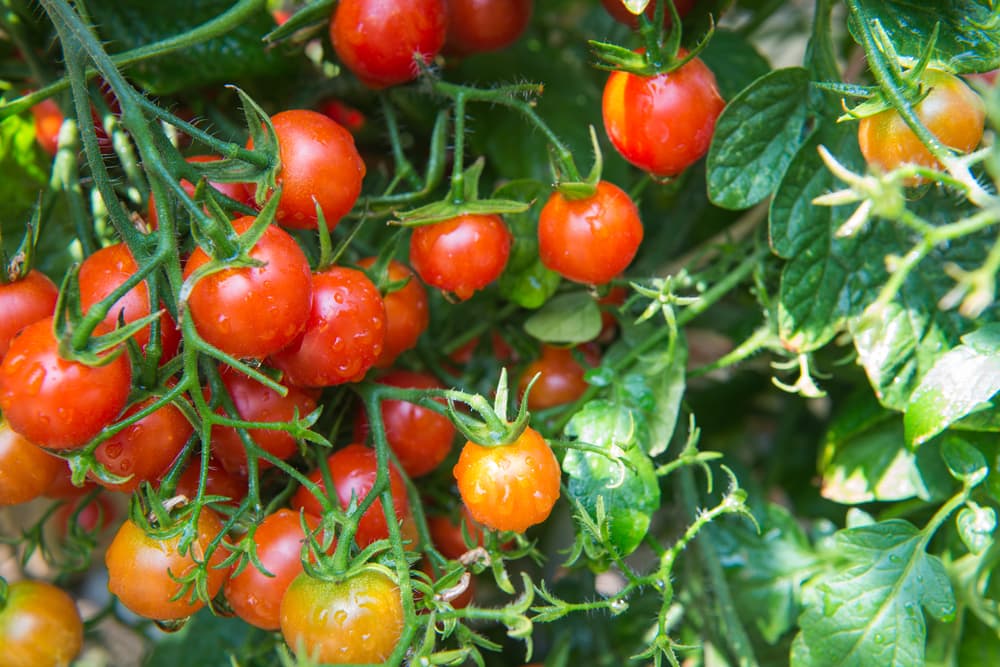
Cherry tomatoes come in a range of colours and as the name would suggest, they’re on the smaller size, typically measuring just 25-35mm in diameter.
Although they’re small compared to more other varieties of tomato, they’re still very popular due to being relatively easy to grow and their sweet taste and soft texture.
Round Tomatoes

Round tomatoes, also referred to as ‘classic tomatoes’ are usually the variety most people think of first.
They have a very appealing flavour and are extremely common in salads as well as being used for frying and cooking with.
Green Tomatoes
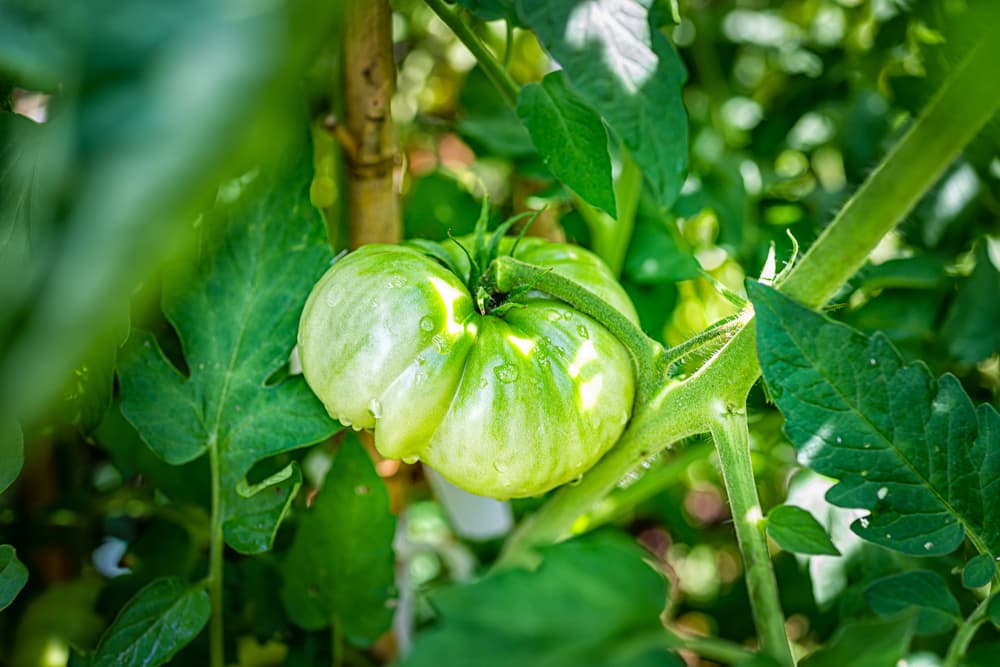
The term ‘green tomato’ can be used to describe red tomatoes that are not yet ripened or specific species of tomatoes that happen to be green in colour, such as the ‘Cherokee’ green tomato.
Unripened tomatoes are often picked early so they can be used for things like breading and pickling.
Yellow Tomatoes
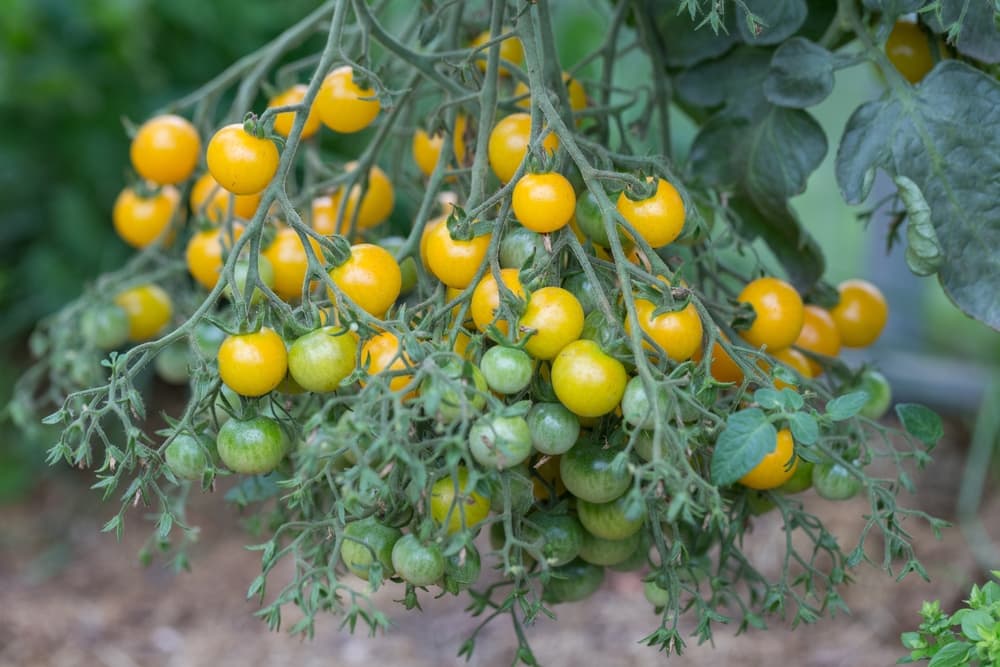
There are quite a few tomato plants that produce yellow fruit and yellow tomatoes generally have different nutritional properties compared to red tomatoes.
Campari Tomatoes

Often referred to as vine tomatoes, Campari tomatoes are a hybrid and have a very sweet taste as well as a juicy texture, making them perfect for cooking with.
Growing Tips & Care
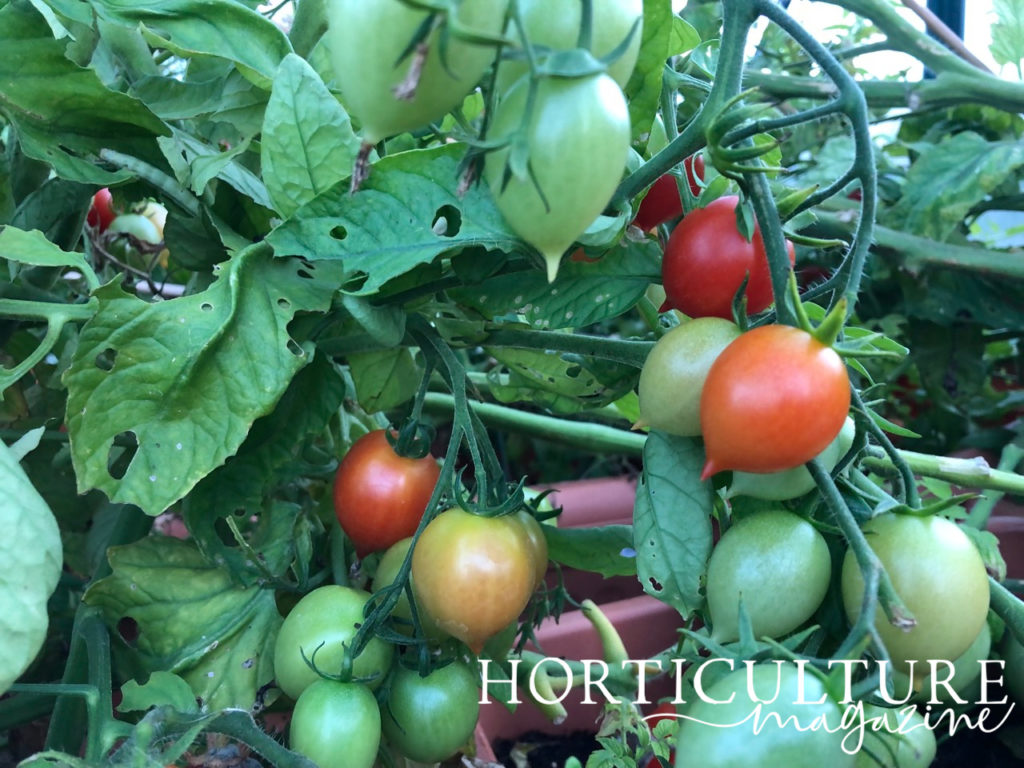
Below are all the steps you need to take to ensure that your tomato plants thrive and produce the best fruit.
Sowing
Growing tomato plants in the right conditions is vital – for the first eight to ten weeks, the seeds will need to be sown indoors.
Read our guide to growing from seed to learn how to germinate your seeds correctly and at the right time.
Seedling Care
In the first few weeks after sowing the seeds, you should take great care to provide the best conditions possible.
You should ensure that the soil or compost you use is moist but not overly saturated.
You should also place the tray with your seeds in a spot that’s warm but out of direct sunlight.

After anywhere from a few days to four weeks, you should notice seedlings begin to appear.
After this happens, you can move them into more direct sunlight, such as a windowsill, while still making sure to keep the soil moist.
At around 50-60 days, you’ll be able to move your plants into individual plant pots.
You should keep an eye on their growth and use larger pots as you need to, always being careful to ensure you don’t damage the roots and use high-quality compost.
“You can pot on tomato seedlings any time after they have grown their first true leaves,” says Master Horticulturist Dan Ori.
“True leaves are the second set of leaves to grow and are normally toothed as opposed to the first set (the seed leaves) that are not.
“You also want to have a good amount of root on your seedling before potting on. I wait to see the fine white roots just poking through the bottom of the seed tray and this is also why I like to use a standard depth seed tray with 3-5cm of sieved, peat-free, multipurpose compost when sowing.
“Tomato seeds germinate easily and are not inhibited by high amounts of nitrogen, which is why you can use multipurpose instead of the seed composts that have lower nitrogen levels.”
Transplanting Outdoors
After your plants have had time to become established indoors, you can then move them outside.
You should choose a spot that gets a decent amount of sunlight but still has adequate shade.

Once the fruit of your plants has ripened enough, you can harvest them.
The best time to harvest would be between May and October – but of course, this can vary somewhat depending on when you first planted them.
Ongoing Plant Care
One of the most important aspects of growing tomatoes that are ripe and healthy is ensuring that the plants get the right amount of water and nutrients.
Irregular watering is one of the most common mistakes that those who are new to growing tomatoes make – the right way to water tomatoes is lightly but often.

Make sure you provide a decent amount of water but don’t allow the soil to become overly saturated.
You should also avoid getting water on the leaves since this can lead to problems like leaf mould.
As far as feeding the plants, you should use a complete fertiliser and feed them once every couple of weeks after the plants have begun to produce fruit.
Do You Need A Greenhouse?

Whether or not you need a greenhouse to grow tomatoes will depend on the type of tomatoes you want to grow.
For example, vine tomatoes are certainly better grown in a greenhouse or polytunnel, while bush tomatoes can thrive outdoors.
An obvious big advantage of having a greenhouse for growing tomatoes and other fruits/vegetables is that you’re able to protect them from the harsh elements.
If you don’t have space, or cannot afford to invest in a traditional greenhouse, then building a polytunnel is a great compromise.
It will enable you to control the growing conditions of any plants, including tomato plants, while requiring a fraction of the time and expense of a traditional greenhouse.
Common Mistakes
Although growing tomatoes can be a greatly rewarding thing to do, it can also be frustrating when your plants don’t produce healthy fruit that’s suitable for use.
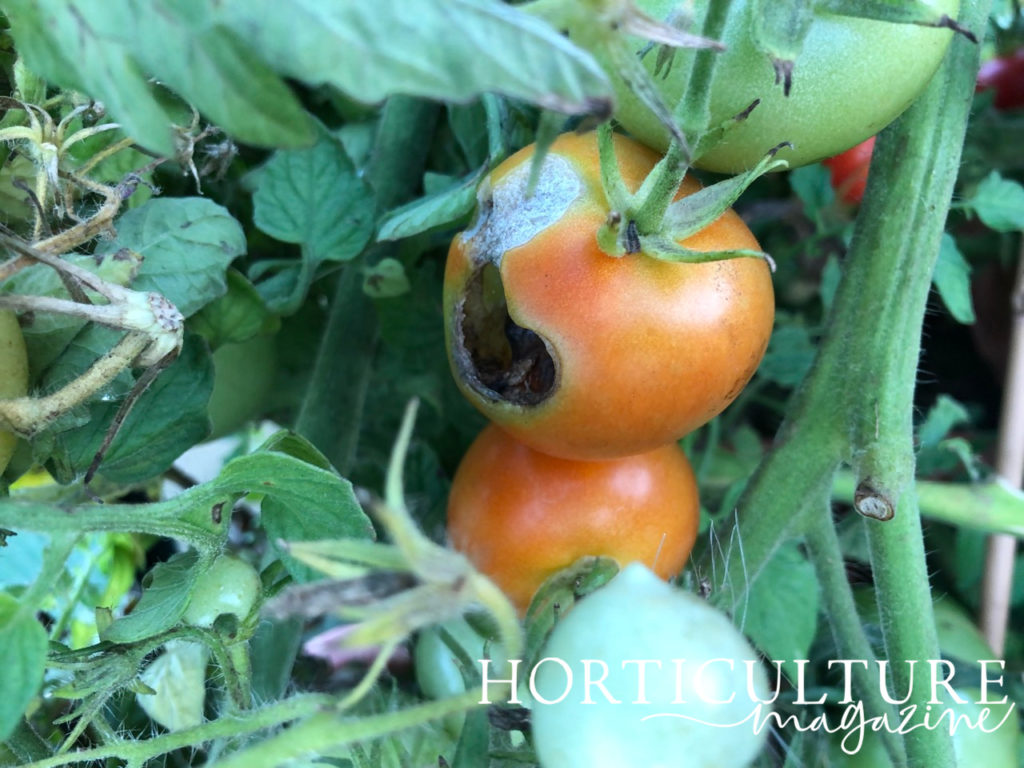
Below are some of the most common mistakes to avoid.
1) Improper Watering
Improper watering is certainly a very common mistake that new growers of tomatoes make.
Failing to water your plants regularly can cause issues such as Blossom End Rot – causing your tomatoes to split and go bad.

For tomato plants to flourish, you need to water them in the right way – this means keeping the moisture levels of the soil as consistent as possible.
The best way to accomplish this is by having a regular watering schedule (mid-morning or early evening are both good times) and avoiding overwatering the plants.
2) Choosing The Wrong Variety
When deciding on what type of tomatoes you want to grow, you need to first think about the conditions you can provide them with.
You might have a specific type of tomato in mind that you want to grow, but if you cannot grow it in ideal conditions for whatever reason, then it’s better to choose another type.
3) Not Using Mulch

Using mulch is a great way to ensure that soil that your tomato plants are in is kept cool and doesn’t dry out.
Layering mulch around the edges of the stem of your plants will keep the soil moist and cool while still allowing the roots to absorb moisture when you water them.
4) Not Pruning
If you’re growing indeterminate tomatoes, then pruning is always recommended.
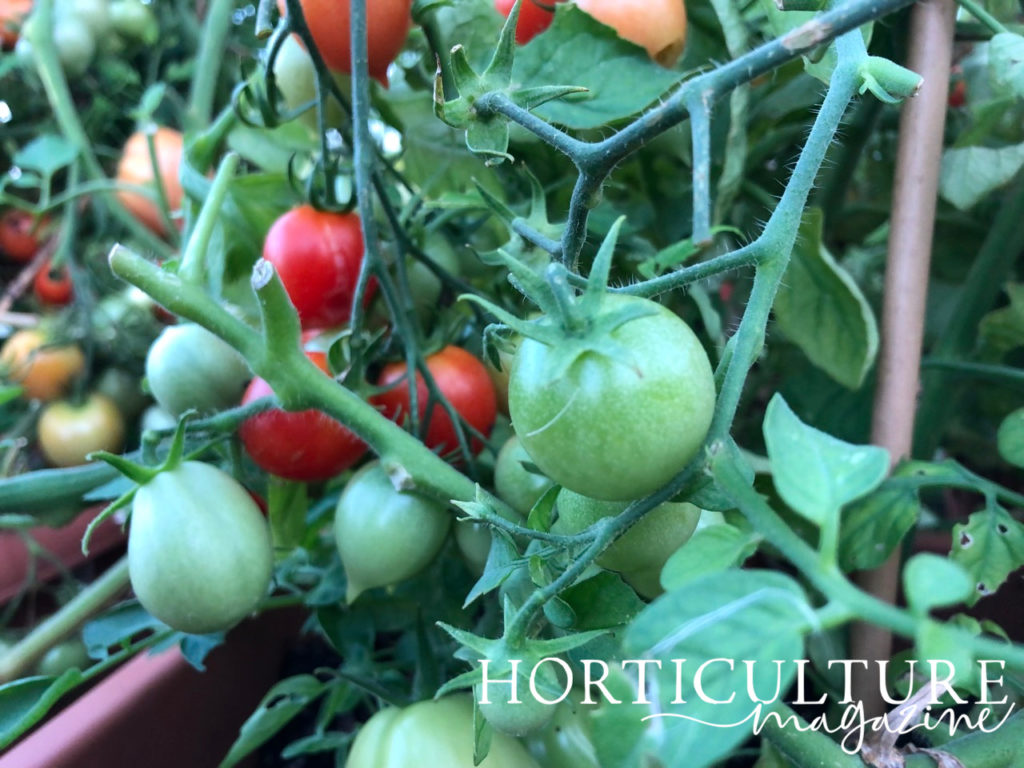
Pruning will help to improve airflow as well as improving the yield of the plants and promoting quicker ripening of the fruit.
5) Not Providing Enough Space
Not providing enough space is another common mistake new growers of tomato plants often make and can cause issues due to reduced airflow and one plant shading another, which can restrict the production of fruit.
The amount of space you need to provide tomato plants will depend on their variety and the size of the beds where you’re growing them.
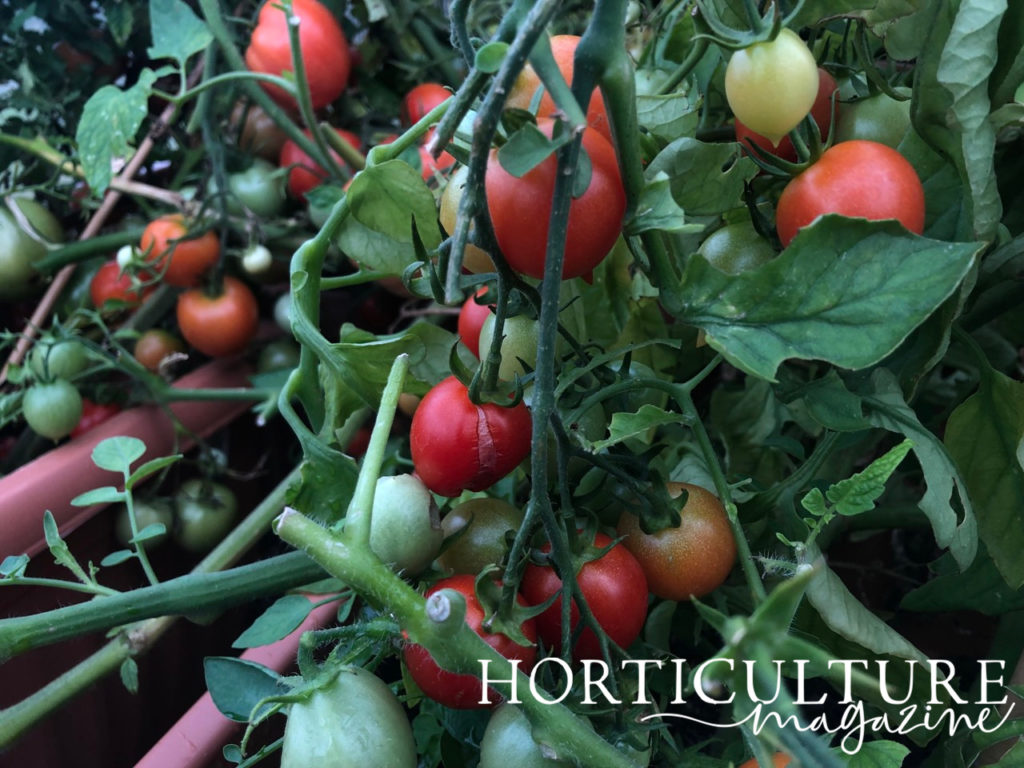
Indeterminate tomato plants will naturally need more space between them since they grow larger than determinate varieties.
A good rough guide is to leave 25-35 inches between indeterminate plants and 20-25 inches between determinate plants.
Common Problems
Unfortunately, tomatoes can be susceptible to developing certain problems.
The issues below are some of the most common:
Leaf Mould

Leaf mould is a common problem for tomato plants, particularly those that are grown in greenhouses.
Leaf mould generally develops in the summer months and is often caused by overwatering.
There are a few ways to prevent leaf mould from occurring in the first place. These include –
- Don’t overwater and avoid getting water on the leaves
- Make sure there is good ventilation when growing in a greenhouse
- Remove any leaves that look like they’re infected and dispose of plants that look like they’re beyond saving
- Try growing plant varieties that are resistant to leaf mould
Fungicides aren’t usually effective on leaf mould, so prevention is the way to go.
Blossom End Rot
Blossom end rot is another common issue for tomato plants that affect the bottom as well as the insides of the fruit.
Blossom end rot is particularly troublesome as it’s only when the tomatoes ripen that the problem becomes apparent, with the bottom of the fruit being black and the insides rotten.

The cause of blossom end rot is the plants not getting enough calcium.
This is usually due to there being too little calcium in the soil or the pH of the soil being wrong.
Tomato plants require slightly acidic soil to grow best, with a pH of around 6.5 so they’re able to properly absorb calcium.
To prevent blossom end rot, you should make sure you plant the seeds in the right soil to begin with – and regularly test the pH of the soil to make sure it doesn’t lose its acidity over time.
“You can normally avoid blossom end rot if you plant in fresh compost each year, water regularly in a consistent way and feed during flower and fruit formation,” says Dan.
Leaf Roll
Leaf roll isn’t as serious as some of the other problems we’ve looked at since tomato plants that display it, will usually still bear healthy fruit.
That being said – it’s still a good idea to keep on top of it since it can be a sign of bigger problems.
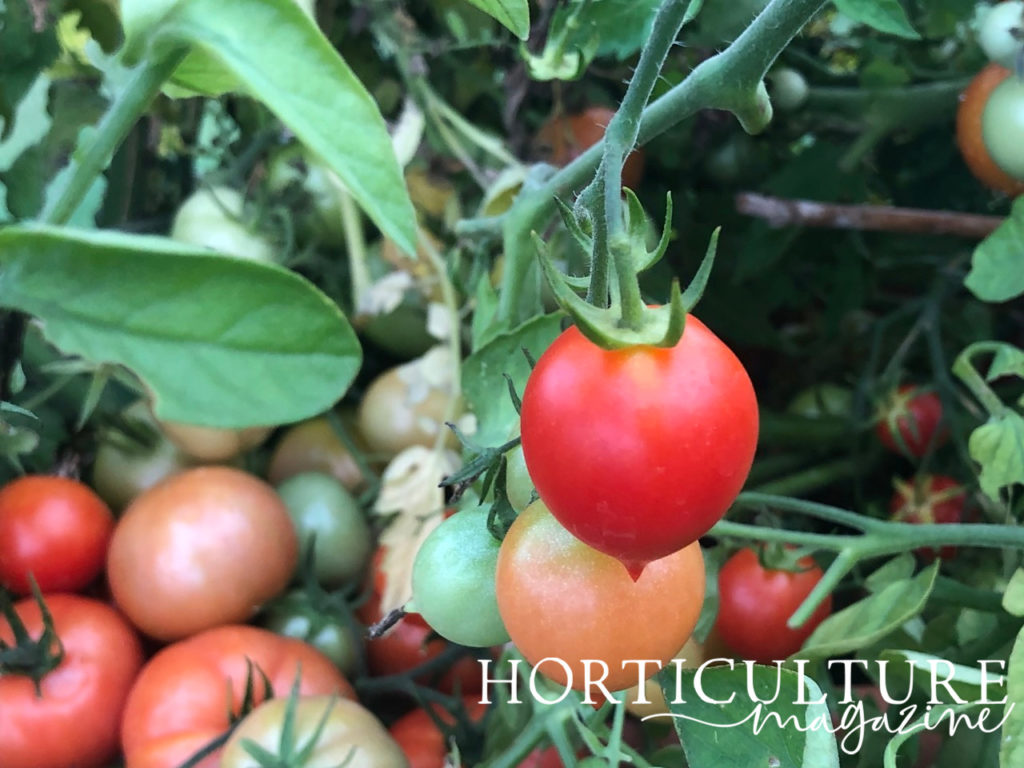
As the name suggests, tomato plants with leaf roll will have their leaves curl up.
The best way to prevent leaf roll is to avoid over-pruning and make sure the soil isn’t overly saturated.
Bacterial Canker
Bacterial canker is a problem that causes yellow spots to form on ripening tomatoes.
Although bacterial canker appears naturally, it’s often spread by infected garden tools or other plants.

Once the bacteria’s in the soil, it’s very easy for plants to get infected when rainwater splashes it up onto the plant’s leaves.
Plants that have holes in their leaves are particularly vulnerable to it.
If you notice your tomatoes have bacterial canker, then you should immediately dispose of them as well as the soil they’re planted in when possible.
References
- 1Tomato – Solanum lycopersicum. (n.d.). Kew Royal Botanic Gardens. Retrieved March 27, 2023, from https://www.kew.org/plants/tomato
- 2Where do tomatoes come from? (2019, October 1). SeedChange. Retrieved March 27, 2023, from https://weseedchange.org/where-do-tomatoes-come-from/



